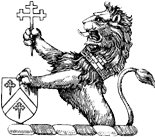Ordinary & Extraordinary
Pope Benedict XVI, in Summorum Pontificum, his motu proprio liberating the Tridentine Latin Mass, says that the new vernacular Mass is “the ordinary expression” of Catholic worship, and the Tridentine Latin Mass is “an extraordinary expression,” according to the official translation.
In The American Heritage Dictionary, “ordinary” is defined as: “1. Commonly encountered; usual; 2.a. Of no exceptional ability, degree, or quality; average; 2.b. Of inferior quality; second-rate.” “Extraordinary” is defined as: “1. Beyond what is ordinary or usual; 2. Highly exceptional; remarkable.” No doubt, the Tridentine Latin Mass is “remarkable.”
Sr. Joan Chittister examines the Tridentine Latin Mass in her column in the National Catholic Reporter (Aug. 3); she offers an evenhanded assessment: “The sense of mystique, the incantation of ‘heavenly’ [Latin] rather than ‘vulgar’ language [English] in both prayer and music, underscores a theology of transcendence. It lifts a person out of the humdrum, the dusty, the noisy, crowded chaos of normal life to some other world. It reminds us of the world to come — beautiful, mystifying, ordered, perfumed [we don’t agree that incense is perfume]. It takes us beyond the present, enables us, if only for a while, to ‘slip the surly bonds of earth’ for a world less mundane.”
In the Dictionary of Ecclesiastic Latin, “ordinárius” is defined as: “ordinary, regular, usual, in order.” “Extraordinárius” is defined as: “extraordinary, from another source, from the outside.” The Tridentine Latin Mass is extraordinary, from another source, from the outside world — it takes one Heavenward. John Henry Newman said, “Time is short, eternity is long.” We say, “Life is short, eternity is forever.”
You May Also Enjoy
George Kendall says some Traditionalists become so obsessed with restoring the old Mass that it becomes a kind of idol.
We should expect liturgical rites wherein the priestly office is most clearly expressed as a living and continuous reality and not a static object in a museum display.
In the early part of the 20th century, the average Catholic was secure in his knowledge that he had arrived at the Truth and was striving to live it.

